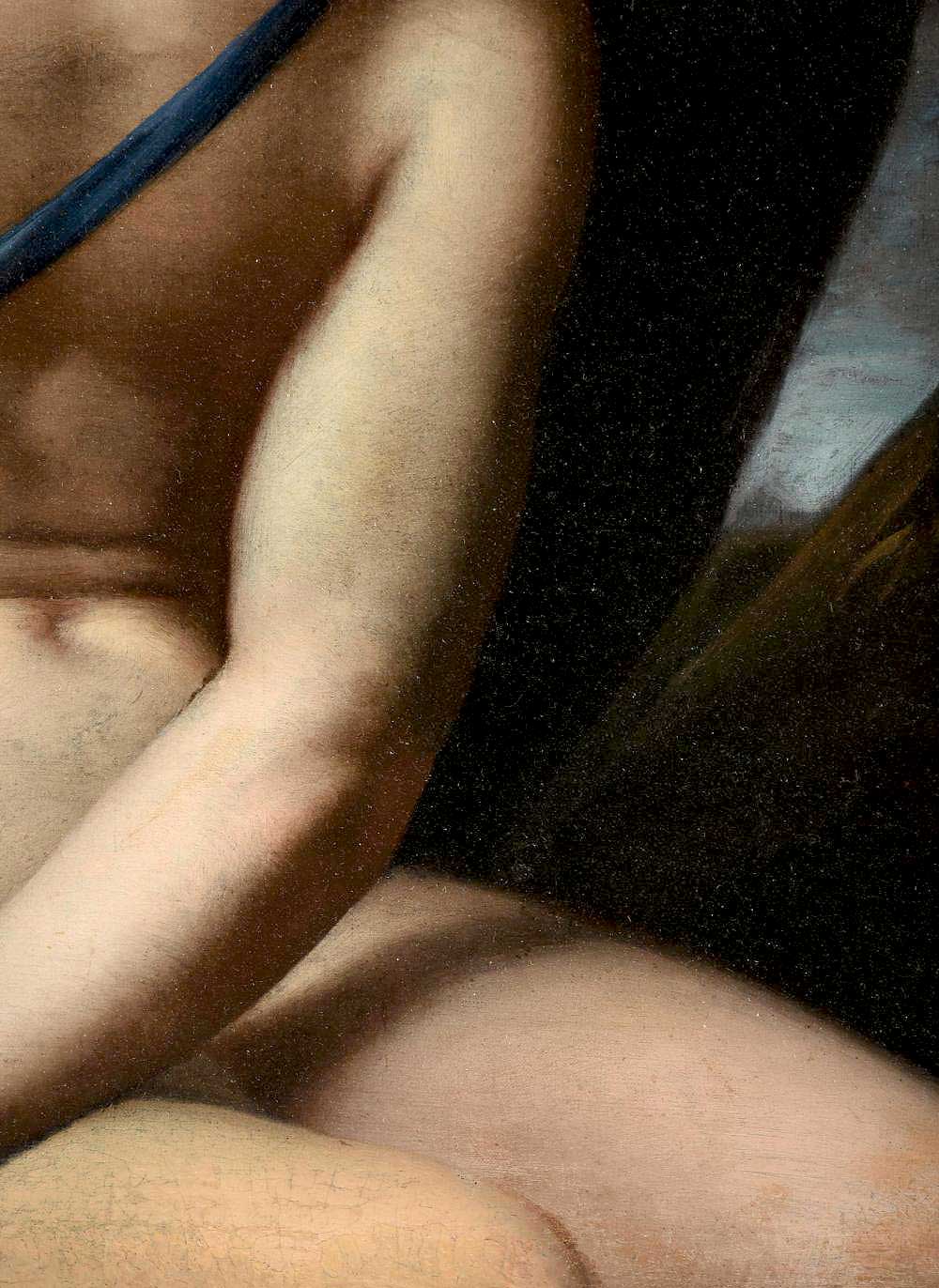

Felice Ficherelli
Cupid
Oil on canvas
Image size: 32 x 28 1/4 inches (81.3 x 71.8 cm)
Original gilt frame
Depicting a relaxed Cupid, the gentle beauty of this painting is immediately striking. This tender atmosphere is created by Ficherelli’s use of sfumato, rendering the flesh tones of the little angel exquisitely.
The emphasis on physicality is readily apparent, with the rolls of flesh on the Cupid’s stomach and his rounded, full face. Additionally, the position of the right arm, clutching gently at the bow string, demonstrates Ficherelli’s understanding of the human form - this position would have been incredibly difficult to render accurately with regard to perspective.
The chiaroscuro further highlights Ficherelli’s skill, particularly in relation to his rendering of skin. Areas of the Cupid are cast in shade and others are better lit, with the sfumato technique seamlessly blending the resultingly varied skin shades. In the background are the Cupid’s wings - one is cast in shadow, whilst the light reflects beautifully off of the feathers of the other.
This painting is a true Baroque masterpiece, and it is no surprise that Vermeer was inspired enough by the works of Ficherelli to diligently produce his own copies.
Felice Ficherelli
Ficherelli was born in 1603 in San Gimignano. In the 1620s, Ficherelli was patronised by the art collector Alberto de Bardi, who was an aide to Cardinal Carlo de Medici. De Bardi welcomed him to his palace in Oltrarno, Florence, and apprenticed him to Jacopo da Empoli. This workshop was one of the most successful in the area of Oltrarno, and Ficherelli was engaged with extensive study of the works of the 16th century Florentine masters. In 1629, Ficherelli enrolled at the Academia del Disegno - he continued his studies after de Bardi’s passing, thanks to a provision in the patron’s will.
In the 1630s, Ficherelli’s work became influenced by his contemporary Francesco Furini and his use of sfumato. Ficherelli often focused on cruel subject matters from antiquity and the Bible, but infused them with a gentleness inspired by Furini, as demonstrated in the above painting of Cupid. Contrastingly to his choices of subject matter, Ficherelli was nicknamed Il Riposo for his quiet and relaxed demeanour.
From 1650, Ficherelli is noted to have become less decorative and more solemn in his subject matters, often painting altarpieces for churches. His colouration became more muted, as with the colour schemes of other Florentine painters, imbuing his works with a tragic tone.
Ficherelli died in Florence in 1660. His works are still in the collection of the de Bardi family, and his altarpieces are still on display in churches across Florence and Tuscany. Museums in Berlin, Lille and Dijon also own his works. However, Ficherelli’s most known work is his painting of Saint Praxedis, which was copied by Johannes Vermeer in 1655.









